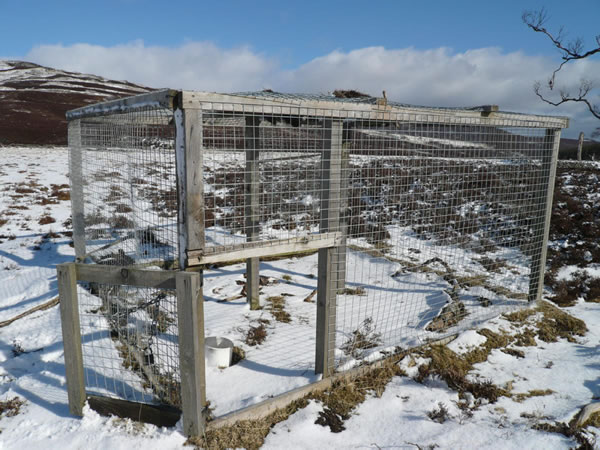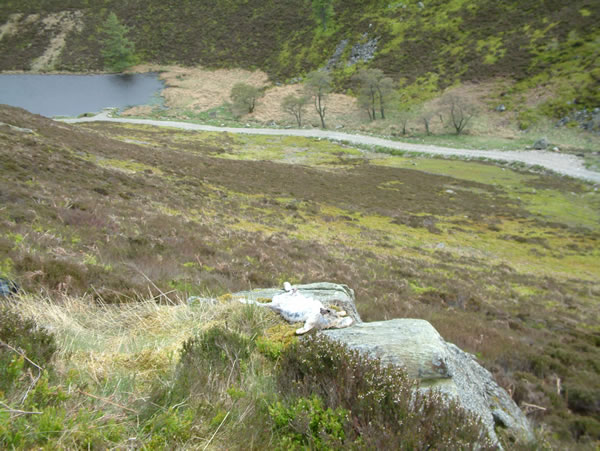TRAPS AND SNARES – Legal or Illegal?
Those who regularly take access to the countryside, for whatever reason, occasionally
encounter a situation that they might just think constitutes a wildlife crime.
Gamekeepers, farmers and others are entitled to control pest species and this
is the side of wildlife management that can most often result in confusion or
even confrontation. It is important that breaches of wildlife law are reported
to the police, but equally important that there is no interference with legitimate
pest control, especially if that interference amounts to an offence in itself.
The following is a very brief guide.
Snares
At the time of publication (January 2008) snares may be set for foxes, and ground
game such as rabbits and hares by a person who is the landowner or who has the
landowner’s authority. The snares must not be of the variety that are self-locking,
in other words they must relax slightly round the animal’s neck when it
stops pulling against it, and must be checked at least once every 24 hours,
at which time anything caught has to be removed. Though it has not been tested
in court, there was a change in the law in early 2007 which appears to make
it an offence to use snares against mountain hares.
The responses to a public consultation on snaring are currently being studied
by the Scottish Government and results are likely to be announced early in 2008.
The outcome may be to ban snares, modify their use, or leave the law on snaring
unchanged.

Bird traps
Crow species can be legally caught in Larsen traps, which are cube-shaped traps
made of wood and wire netting, or completely of wire. There are normally three
compartments, one of which is likely to hold a decoy bird, most likely to be
a carrion crow or a magpie, with the other two compartments used to catch other
crow species attracted inside. To be legal, the decoy bird must have food, water,
shelter and a perch, and the trap must be checked at least once every 24 hours.
There should never be an occasion when a pigeon is used as a decoy, since this
is likely to result in a bird of prey being caught.
Large multi-catch traps are more commonly seen, with the main principle being
that they should be checked every 24 hours. There are occasions when birds of
prey, especially buzzards and kestrels will enter these. This is not an offence
provided the birds are released when the trap is checked. If birds of prey are
seen in the trap, it is a good idea to make the police aware and if possible
they will ensure that the trap operator attends immediately to release them.
Multi-catch traps are sometimes legally used to catch rooks and jackdaws.
At any time when the trap is not being used, it must be made unable to catch
or to hold birds. Normally this is by padlocking the door open, or removing
the door or a wire panel completely. Failing to do this is an offence.

Mammal traps
These are of two designs. Those that kill the target species are set in tunnels
with a narrow entrance that should limit entry only to animals no larger than
a grey squirrel (though a slightly larger trap may legitimately be used to catch
rabbits and mink.) There is no need in law for a daily check of these traps,
though best practice dictates that this usually happens. They may also be set,
still within a tunnel, on a plank of wood over a burn but the test of legality
is always the measure taken to deny access to non-target animals such as hedgehog
and other larger protected species. Live-catch traps are usually rectangular-shaped
wire cages, open at one end and with bait at the other. These traps must be
checked on a 24-hour basis.
Lastly, if you think you have found a poisoned bait (often a rabbit, pheasant
or egg) or the victim of such, do not touch it and make contact with
the police immediately, if possible by mobile phone while there, and ask to
speak to a wildlife crime officer. They would also be grateful if an image
is able to be emailed, even if you have had to come home by this time, and should
be able to interpret the images.
As a break from the norm we are grateful for this contribution from one
of this season’s speakers: Alan Stewart, wildlife and environment
officer, Tayside Police. For further information see the Wildlife Crime Page
of the Tayside Police website at www.tayside.police.uk
or read Wildlife Detective by Alan Stewart, (Argyll Publishing, RRP £14.99,
ISBN 978 1 906134 04 4)
NEMT Front Page
| Previous Page | Volume Index Page
| Next Page | Journal Index
Page
Please let the webmaster know if there
are problems with viewing these pages or with the links they contain.

